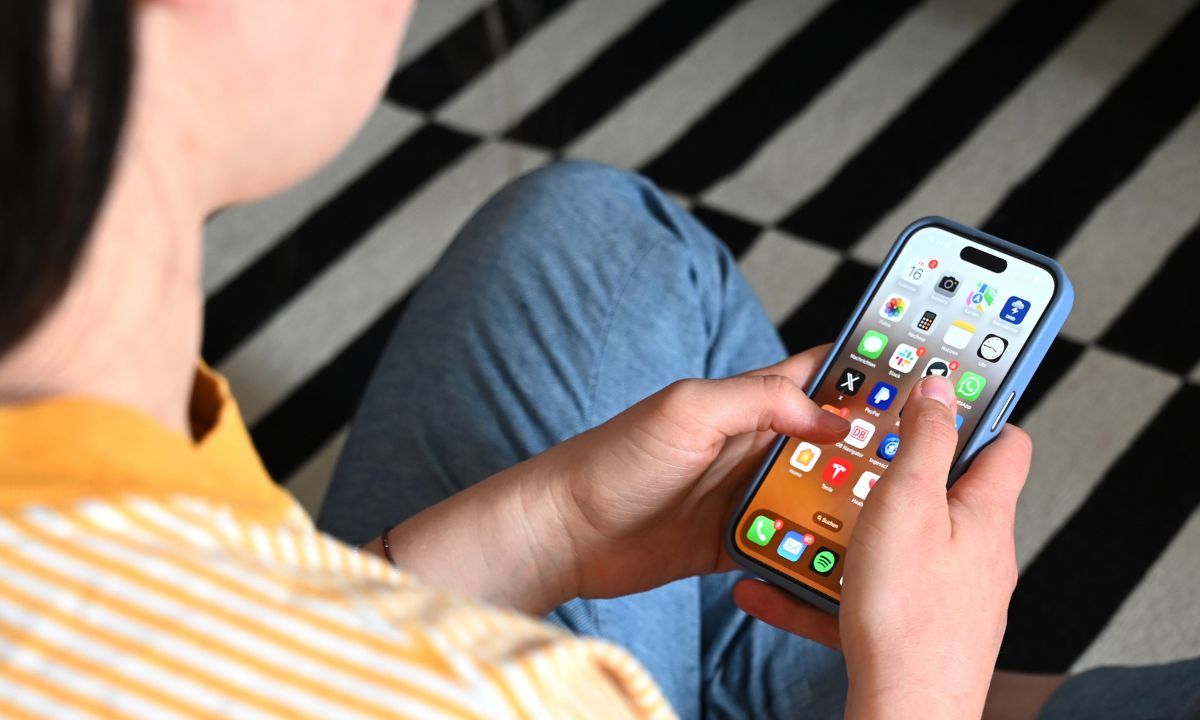I Talked to Teenagers About Conspiracy Theories. Here’s What They Told Me
Covington: For students who watched the viral social media response to a classmate’s death, news literacy is key.

Get stories like this delivered straight to your inbox. Sign up for The 74 Newsletter
Sixteen-year-old Andie Murphy isn’t on TikTok. She turned off tracking on YouTube and deleted Instagram months ago over its artificial intelligence policy and concerns about posts being used to train AI.
As much as possible, the high school junior has tried to set up guardrails on rapid-fire social feeds to limit scrolling and the allure of algorithms’ suggestions. “For my own self control,” she said.
Murphy may be an outlier among her peers, but increasingly many teens share her feelings of information overload and awareness that they can’t trust everything they read on social media. “There’s just so much bad information out there that it sometimes gets jumbled up,” Murphy said. “It’s just hard to discern what someone’s intent is with something.”
As members of Gen Z — born between 1997 and 2012 — high school students like Murphy have grown up with smartphones and social media. It’s a digital world where algorithms fuel endless scrolling and conspiracy theories feel like the norm.
That’s particularly true for Murphy and her classmates at Owasso High School in Owasso, Oklahoma, a quickly growing Tulsa suburb of 39,000. It’s a place that last year felt the intense glare of going viral and the chaotic flow of news, half-truths and hate following the death of Nex Benedict, a 16-year-old nonbinary student who died a day after an altercation in the girls’ bathroom.
As a news literacy expert working to support educators, I recently spoke with 12 students at Owasso High School about their news habits and what it’s like trying to find credible information in an online environment that constantly tests their ability to know what’s true.
Here are four takeaways from our conversations.
1. Teens are drawn to conspiracy theories — and may not realize they can lead down dangerous rabbit holes.
A fall 2024 study by the News Literacy Project found that eight in 10 teens on social media say they encounter conspiracy theories, with 81% of those teens reporting that they are inclined to believe at least one of them.
Senior Elijah Wagner, 18, told me he often turns to X, formerly Twitter, and sorts through “the chaos” of content on the platform to keep up with news.
“There’s a lot of conspiracy theories on Twitter,” Wagner said, adding that much of what he sees are “people who just want to make a big deal about something.”
For some young people, part of the appeal is that these narratives feel fun and entertaining. Students I spoke with rattled off viral rumors they’ve seen about celebrities like Beyoncé. But as with the teens in our national survey, Owasso students also reported seeing conspiracies that went well beyond celebrity gossip, including disproven theories about the Earth being flat and falsehoods about 9/11.
Though exposure is not the same as belief, seeing a claim repeated enough — even one that starts out as a joke — can make it feel true. “It gets to the point where it’s kind of hard not to believe some of them,” said Kelsey Perry, 18.
2. Peers can play an important role in fact-checking.
In online spaces, fact-checking is something many students try to do. Among teens who engage with news-related social media posts, nearly eight in 10 report that they at least sometimes fact-check these posts before sharing or liking them, according to our study. Those who were taught media literacy were more likely to say they frequently check for accuracy before posting online.
Research has suggested that we’re more likely to believe fact-checks from people we know.
On the winter day of my visit, the Los Angeles wildfires dominated online conversation. News of the fires had reached students not only through the mighty curation of their TikTok For You pages, but also through family and friends.
One student admitted she hadn’t kept up with the fires because they seem far removed from their Oklahoma community. She added that the fires, after all, were happening all the way “in Atlanta.”
“No, it’s in L.A.,” an 18-year-old classmate said, chiming in with a fact-check.
The group laughed, agreed and moved on to describe videos they’d seen of the destruction.
During their lunch hour in the library, these students continued cycling through a process of shared meaning-making: offering information, testing it against each other’s knowledge and interpreting it as a group.
When conspiracy theories came up, a junior mentioned seeing posts suggesting the Holocaust didn’t happen. “But I’m pretty sure that did happen,” she added, “because isn’t there, like, museums for it and stuff?”
Another student confirmed, saying they just learned about the Holocaust in history class the day before. A win for real-time social correction — and a reminder of why it’s crucial for students to feel comfortable stepping into the role of fact-checker to share what they know with peers.
3. Yes, teens turn to influencers, but standards-based news still has a place.
We know many young people see social media influencers as trusted sources, even over news outlets. In fact, our survey found that eight in 10 teens say that the information news organizations produce is either more biased than or about the same as other content creators online.
In each of my conversations, it didn’t take long for talk of social media to broach the story that last year turned this high school into a national fixture of grief and viral debate. Reflecting on the death of their classmate and the crush of national attention that ensued, students recalled when misinformation became personal and painful.
Hateful comments flooded school-associated social media accounts. Classmates stayed home following a wave of threats against the school. Students described seeing a protest unfold outside classroom windows while following along on a TikTok livestream. One student remembered eating lunch with a teacher rather than in the cafeteria because a friend felt scared.
They also watched celebrities and influencers weigh in.
For Murphy, who tries to limit her social media use, last year marked a turning point. She said an influencer she followed for political commentary on current events posted about the Owasso student’s death before many details had been confirmed. “Seeing them make that post really made me see that maybe they weren’t as credible as I originally thought they were,” Murphy said.
Now Murphy said she tries to check multiple credible sources for news to compare what she’s hearing.
Other students told me something similar: Though many people their age follow influencers, news outlets still have a place, especially for stories that meet a certain threshold of importance. (“If it’s big enough,” or “if I’m scared about the news,” one 16-year-old said.)
4. They want news literacy instruction.
The News Literacy Project’s study shows that an overwhelming majority of teens (94%) want media literacy instruction, but most aren’t getting it.
I heard much the same at Owasso High School. Some students said they’d heard terms like “lateral reading” in school: when you leave a source of information and do a quick search to learn more about the claim or source. But they also told me they wished media literacy could be woven throughout their classes, from statistics to science.
Library media specialist Melinda Gallagher has been teaching news literacy lessons for about eight years in her role at Owasso. “I feel like this is one way we can help our students — and help ourselves, to be frank — with figuring out what is real and what is not,” Gallagher said. “It’s very important for our future as a country.”
Students didn’t ask for this online quagmire or create it. But it’s a world they’re expected to navigate. “Social media is so prevalent … it’s not going away,” said Makenzy Holm, 17. “We might as well learn to use it to our best ability.”
Get stories like these delivered straight to your inbox. Sign up for The 74 Newsletter

;)
